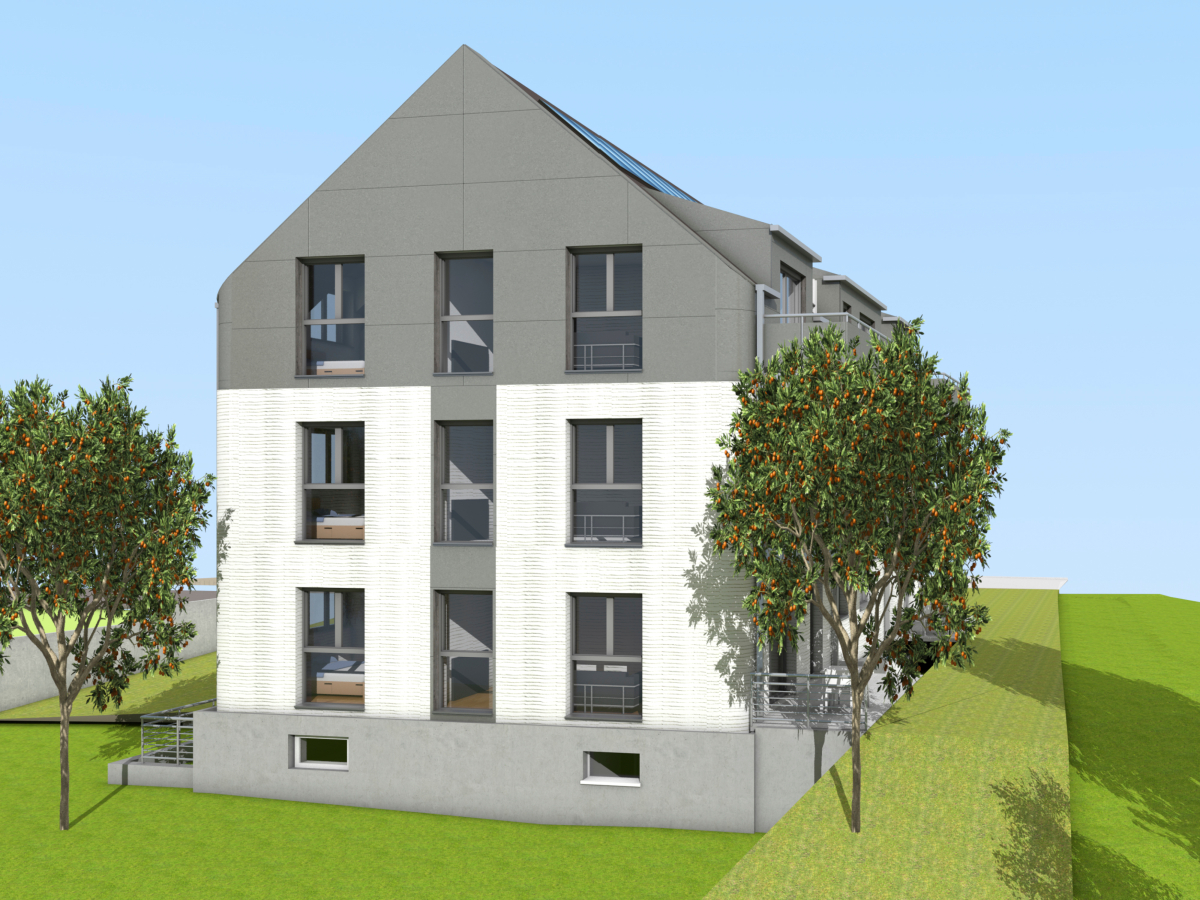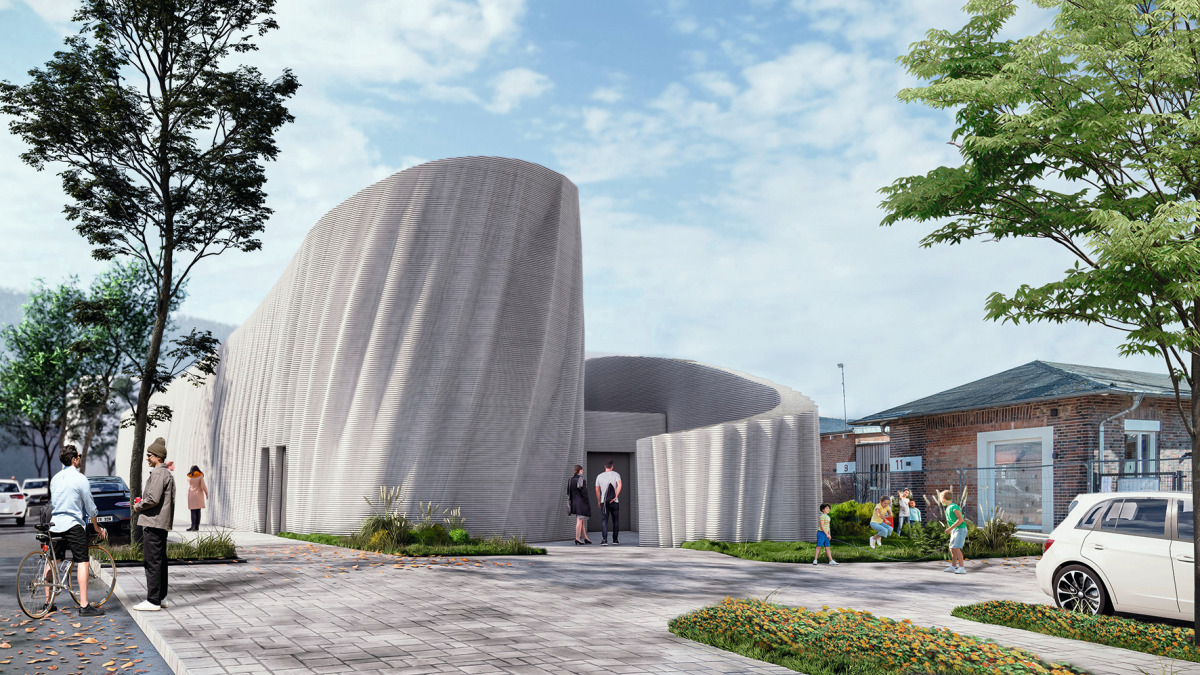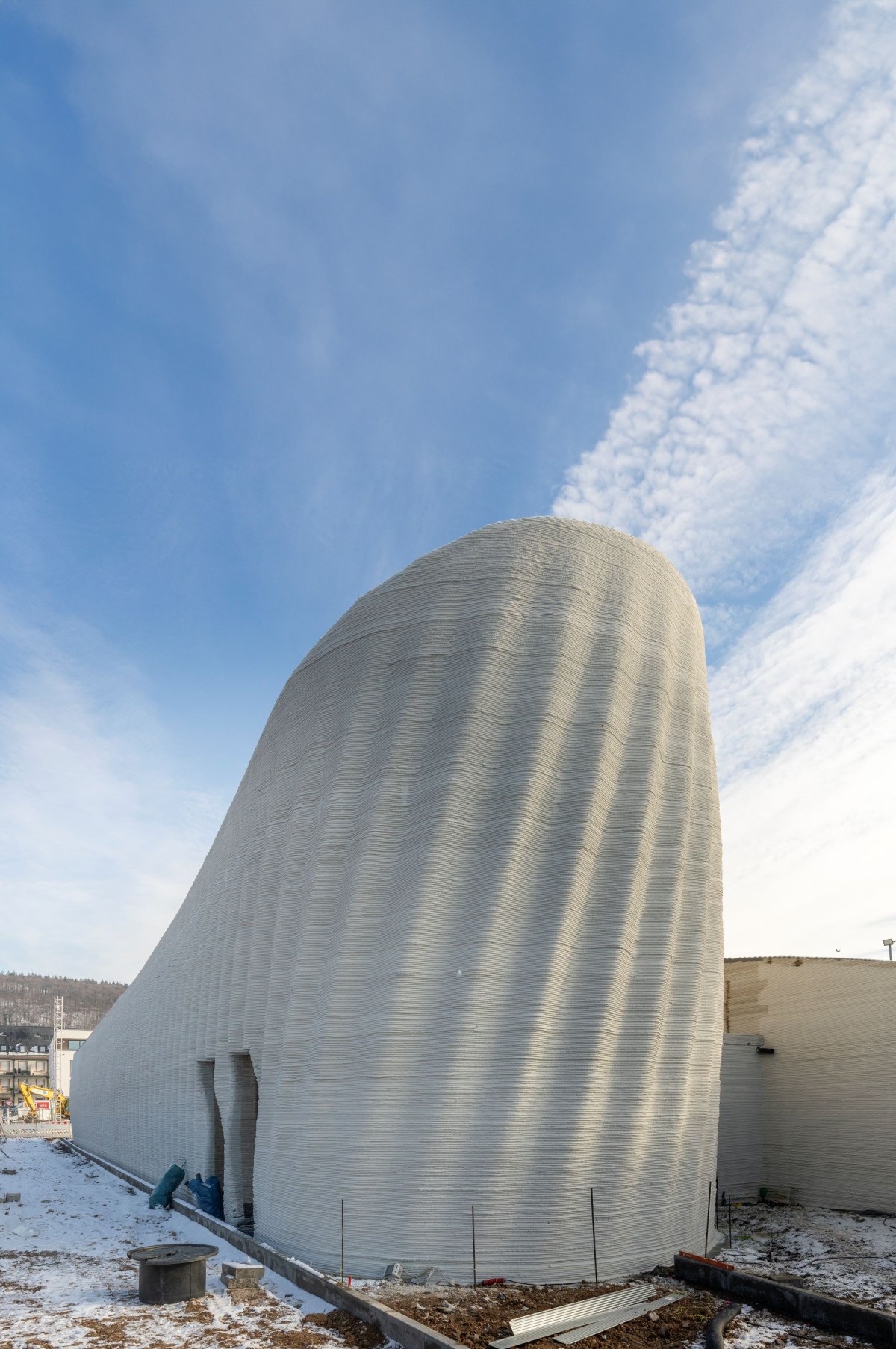Printed and subsidized
First publicly funded 3D-printed residential building completed 12.12.2024Germany’s first publicly subsidized residential building from a 3D printer has been completed in Lünen/North Rhine-Westphalia. The innovative construction project sets new standards in residential construction and combines state-of-the-art 3D printing technology with sustainable building materials from Heidelberg Materials. The building project combines affordable housing and innovative construction under one roof in a unique way.
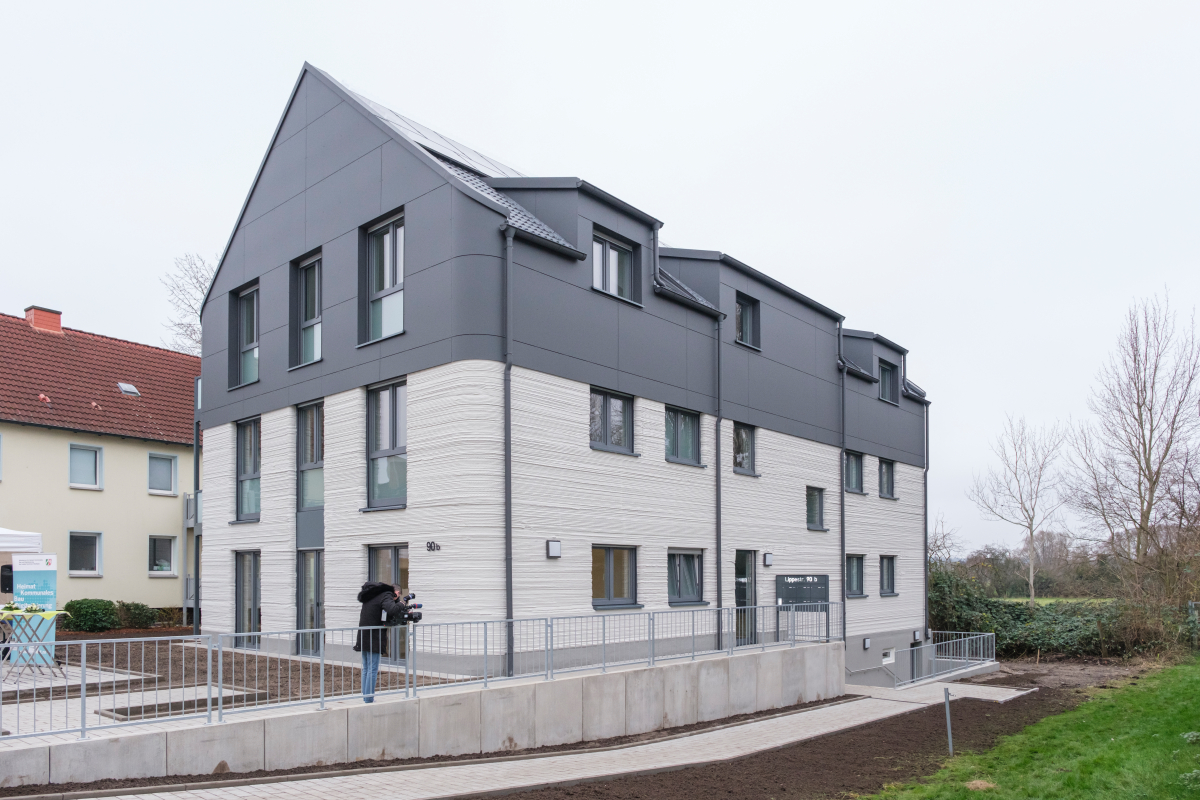 The 3D-printed apartment building in Lünen stands on a 651 m2 plot and has a total living space of 423.99 m2. The six residential units are divided into three 2-room apartments with around 60 m2 of living space and three 3-room apartments with around 80 m2 of living space
The 3D-printed apartment building in Lünen stands on a 651 m2 plot and has a total living space of 423.99 m2. The six residential units are divided into three 2-room apartments with around 60 m2 of living space and three 3-room apartments with around 80 m2 of living space
© Heidelberg Materials AG I Detlef Podehl
High-tech material for 3D concrete printing from Heidelberg Materials
The 3D printed concrete from Heidelberg Materials used in this construction project is a high-tech building material that is 100% recyclable and contains a binder with a CO₂ reduction of around 55% compared to Portland cement. Additive manufacturing made it possible to save a considerable amount of time, as the printing time for the entire building was just 118 h.
Dr. Jörg Dietrich, Head of Engineering & Innovation and Head of Product Management at Heidelberg Materials Germany: “The 3D printed concrete from Heidelberg Materials has made the construction of sustainable and affordable housing possible. We are proud to have been part of this pioneering project, especially in times of the housing crisis.”
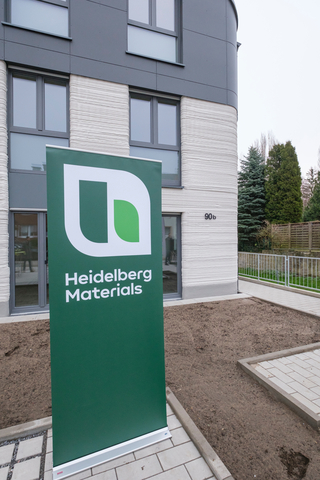 The 3D printed concrete from Heidelberg Materials used in this construction project is a high-tech building material that is 100% recyclable. The binder it contains has a CO₂ reduction of around 55% compared to Portland cement
The 3D printed concrete from Heidelberg Materials used in this construction project is a high-tech building material that is 100% recyclable. The binder it contains has a CO₂ reduction of around 55% compared to Portland cement
© Heidelberg Materials AG I Detlef Podehl
The high-tech material from Heidelberg Materials has already been used in the first 3D printed houses in Beckum, Wallenhausen, Nordkirchen and in Europe’s largest 3D printed building to date, the Wavehouse in Heidelberg.
Maximum rent of € 6.00 per m2 thanks to subsidy
The apartment building in Lünen stands on a 651 m2 plot and has a total living space of 423.99 m2. The six residential units are divided into three 2-room apartments with around 60 m2 of living space and three 3-room apartments with around 80 m2 of living space. The basic rent for Germany’s first publicly subsidized residential building from the 3D printer is a maximum of € 6.00/m2. The building is equipped with a photovoltaic system and an electricity storage unit and is heated with district heating, which also contributes to the sustainability of the project.
The project was realized in collaboration with Wohnungsbaugesellschaft Lünen, Steinhoff Architekten, PERI 3D Construction GmbH and other partners. Their expertise in the field of sustainable construction methods and their ability to make optimum use of the possibilities of 3D printing have resulted in a pioneering residential building.
The construction project was supported by the Ministry of Regional Identity, Communities and Local Government, Building and Digitalization of the state of North Rhine-Westphalia as part of the state’s “Innovation in the construction industry” funding (€ 400000) and with around € 1.3 million from public housing subsidies.
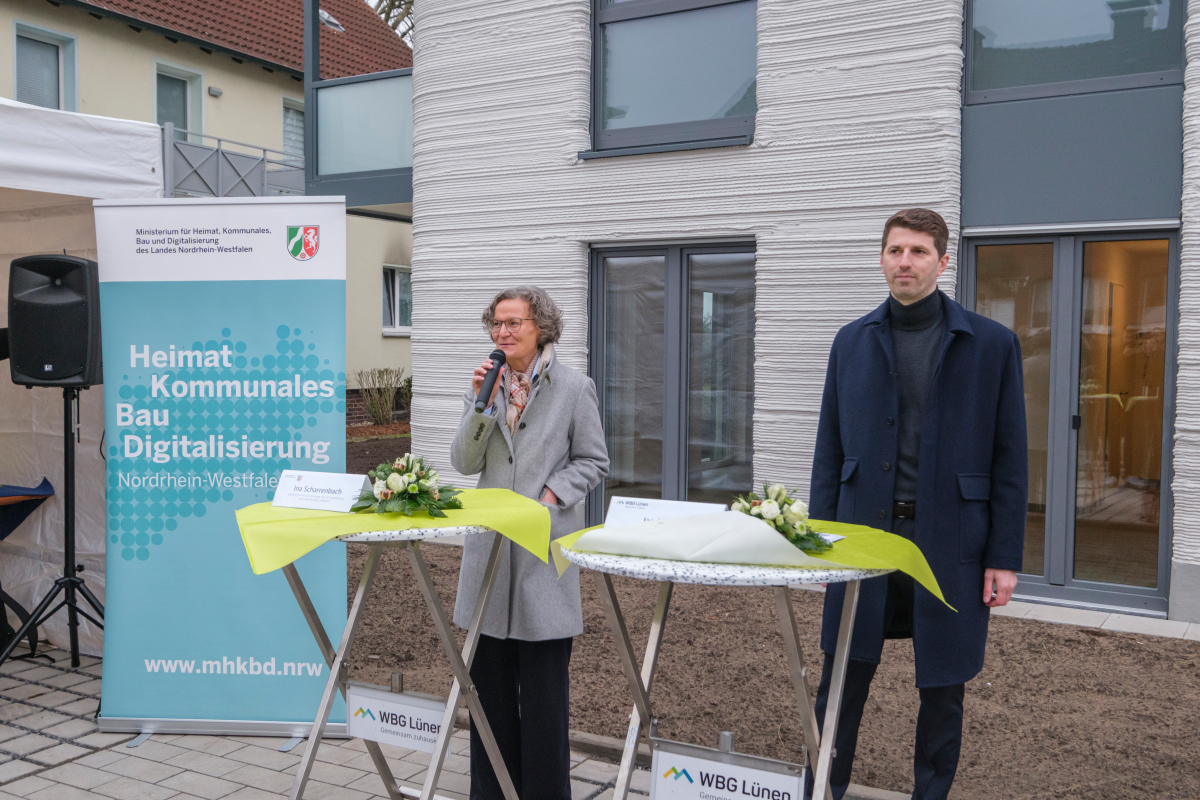 Ina Scharrenbach (left), Minister for Regional Identity, Communities, Building and Digitalization of the State of North Rhine-Westphalia, and Jan Hische (right), CEO of Wohnungsbaugenossenschaft Lünen eG, symbolically handed over the building to its future tenants
Ina Scharrenbach (left), Minister for Regional Identity, Communities, Building and Digitalization of the State of North Rhine-Westphalia, and Jan Hische (right), CEO of Wohnungsbaugenossenschaft Lünen eG, symbolically handed over the building to its future tenants
© Heidelberg Materials AG I Detlef Podehl
The aim of the funded project in Lünen is to gain practical experience and knowledge in the construction of a building using the 3D concrete printing process. This will serve as a basis for the planning and economic consideration of follow-up projects and accelerate their construction time. The experience and findings will be used to develop standardized procedures for approval procedures, construction preparation and construction work, for example, and make them available to the public.
Project profile
Project: First publicly subsidized 3D-printed apartment building, Lünen
Client: Lünen housing association
Architectural office: Steinhoff Architects
Construction company: PERI 3D Construction GmbH
Concrete: High-tech material, Heidelberg Materials
Completion: 2024

